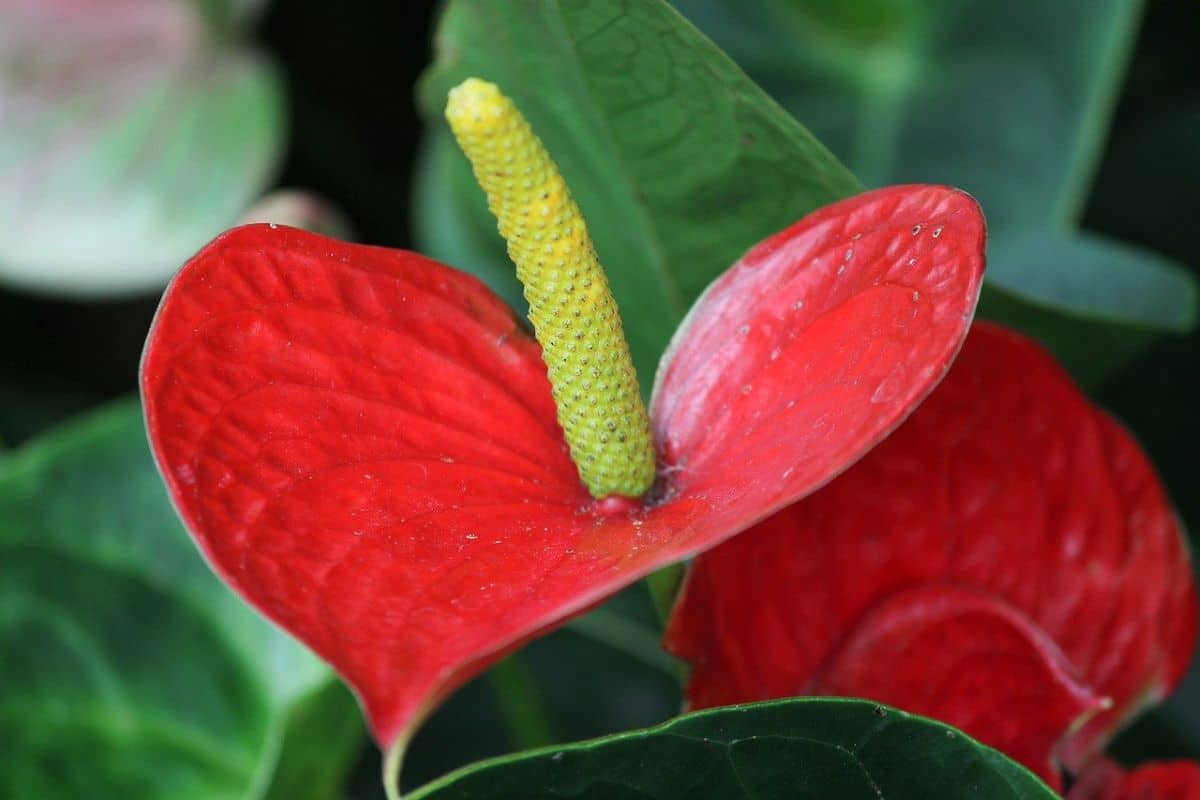
Plants of the genus Anthurium They are very beautiful, so much so that they are often grown not only at home, but also in offices, offices, waiting rooms ... Of course, also in gardens, although due to their zero resistance to cold they can only be grown outdoors all year round in tropical and subtropical regions.
The problem is that we are not talking about easy-to-care plants, largely due to their natural origin. So, When we get a copy, we have to know its needs well.
Origin and characteristics of Anthurium
It is a genus of plants that includes some 800 different species, native to tropical America (both central and southern). They belong to the Anthurieae family, a family that includes a single genus, Anthurium, and the most common species is the anthurium andreanum, known as red anthurium.
These plants are herbaceous, sometimes woody, and can grow either upright or as creeping. The leaves are heart-shaped, leathery, bright green. And the flowers are actually an inflorescence composed of a red, green, pink, yellow or even black spathe.
How long does the anthurium flower last?
The flowers last about two months, and they sprout in summer. For this reason, we should not worry if the rest of the year does not bloom, since it is completely normal. Of course, to ensure that they last as long as possible, it is highly recommended that the temperature is kept above 20 and below 30 degrees Celsius, and that the ambient humidity is high.
Anthurium types or species
Take a look at the main Anthurium species to know which one to choose to decorate your home or garden:
Red anthurium (anthurium andreanum)
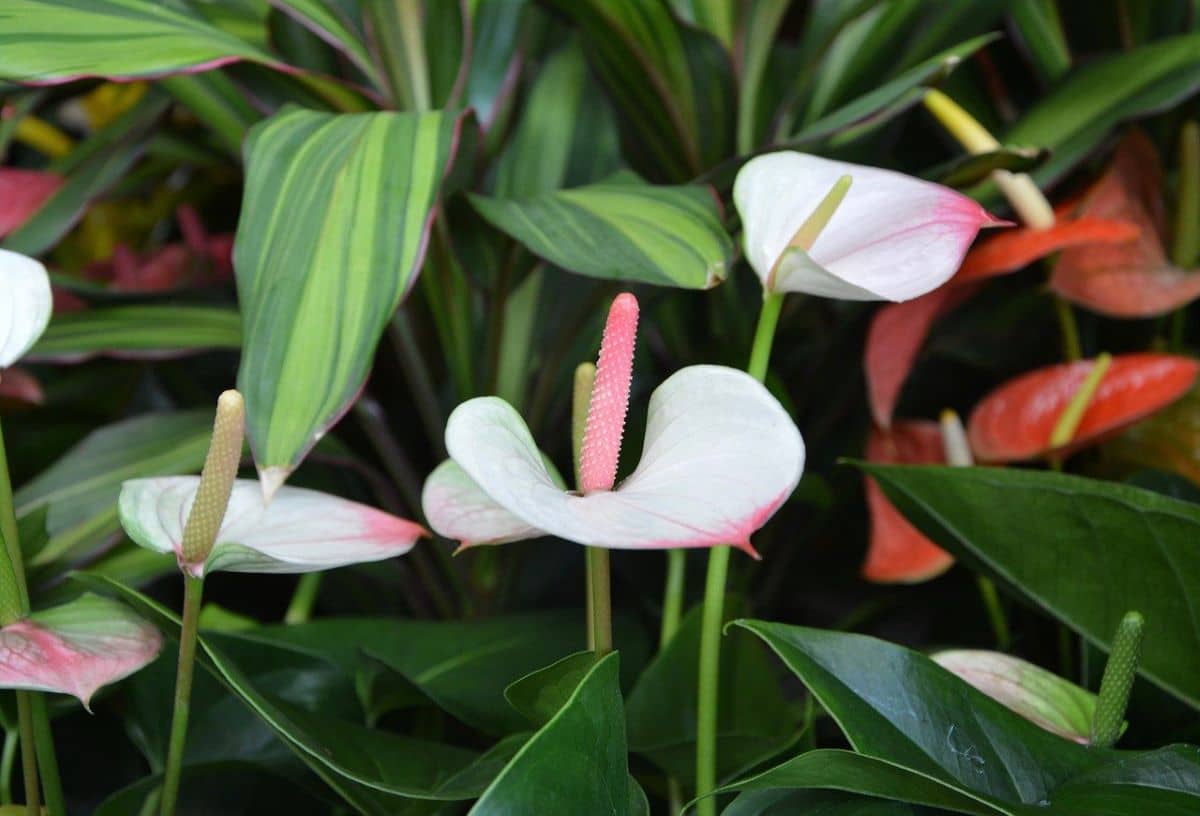
El anthurium andreanum it is a plant that grows more or less straight. It has large green leaves and visible veins. It produces red inflorescences, and can grow up to 1 meter in height.
Different varieties are known, such as:
- Album: white flower.
- Giganteum: with a red or pink flower and a size greater than one meter.
- Guatemala: yellow flower.
- Black Knight: black flower.
Anthurium clarinervium

Image - Flickr / Clivid
El Anthurium clarinervium is a plant that has dark green heart-shaped leaves with light green veins. It has the peculiarity that the new leaf is light brownish in color with almost white veins.
Anthurium scherzerianum
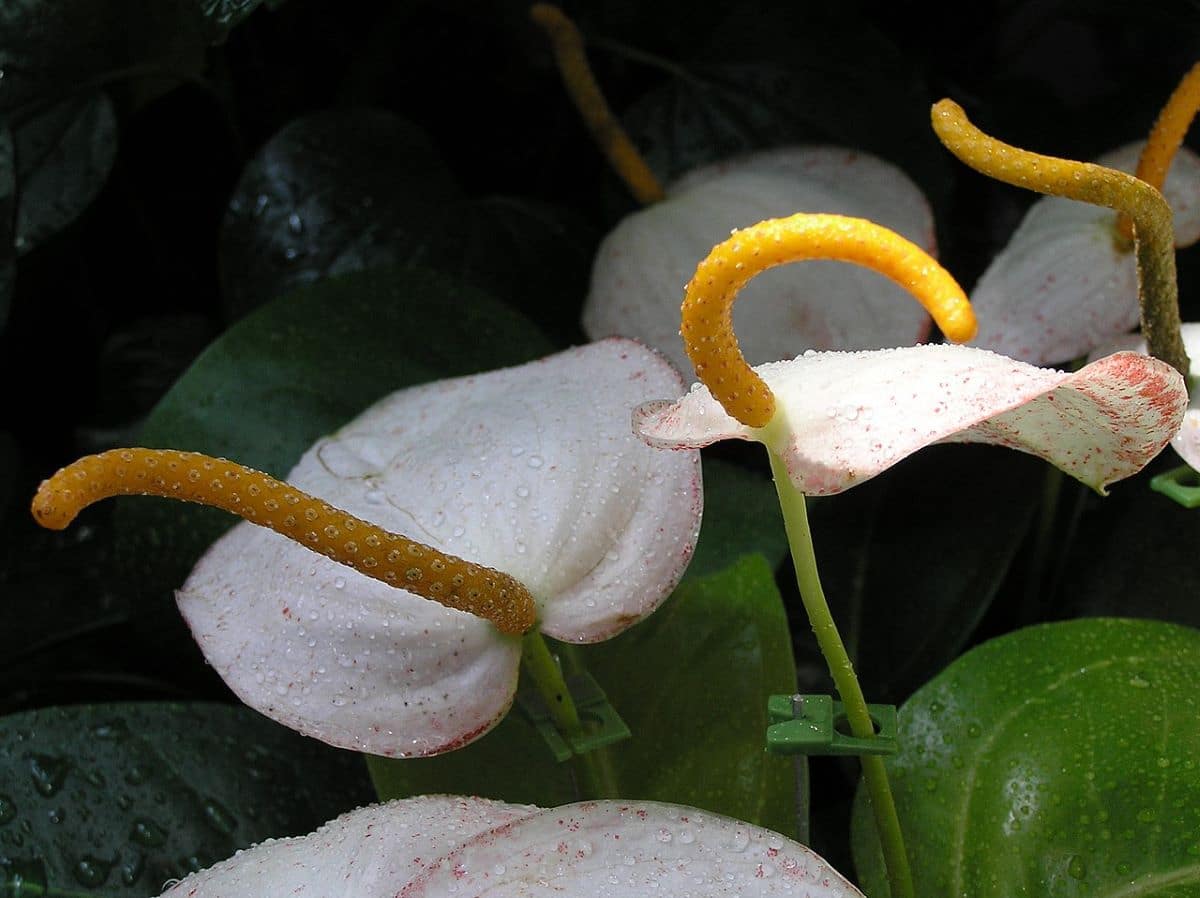
Image - Wikimedia / 阿 橋 HQ
El Anthurium scherzerianum It is a herbaceous plant that reaches a height of up to 50 centimeters in height. Its leaves are glossy dark green, and its flower is so curious that it receives the name of flamingo flower.
Anthurium care
Now we go on to explain how these plants are cared for. In this way, you will know what to do to avoid problems:
Location
- Interior: They are one of the few flowering houseplants that can be kept in a bright room away from windows. Likewise, it is important that they are kept away from drafts.
- Body exterior:: they must be in the shade. For example, under a shading net, or in an area protected from the sun.
How should the anthuriums be watered?
Anthuriums they should be watered two or three times a week during the summer, but the rest of the year you have to let the substrate dry more before hydrating it again. For this reason, and since they fear waterlogging, it is best to check the humidity of the soil with a digital meter in case of doubt. In addition, rainwater or low-lime water must be used.
Humidity)
Regarding humidity, it must be said that they are plants that do not survive in dry climates or places. In the event that where you live the humidity is low, regardless of whether you are going to grow them indoors or outdoors, you will have to spray / spray their leaves with water daily in summer, and put containers with water around them the rest of the year.
Soil or substrate
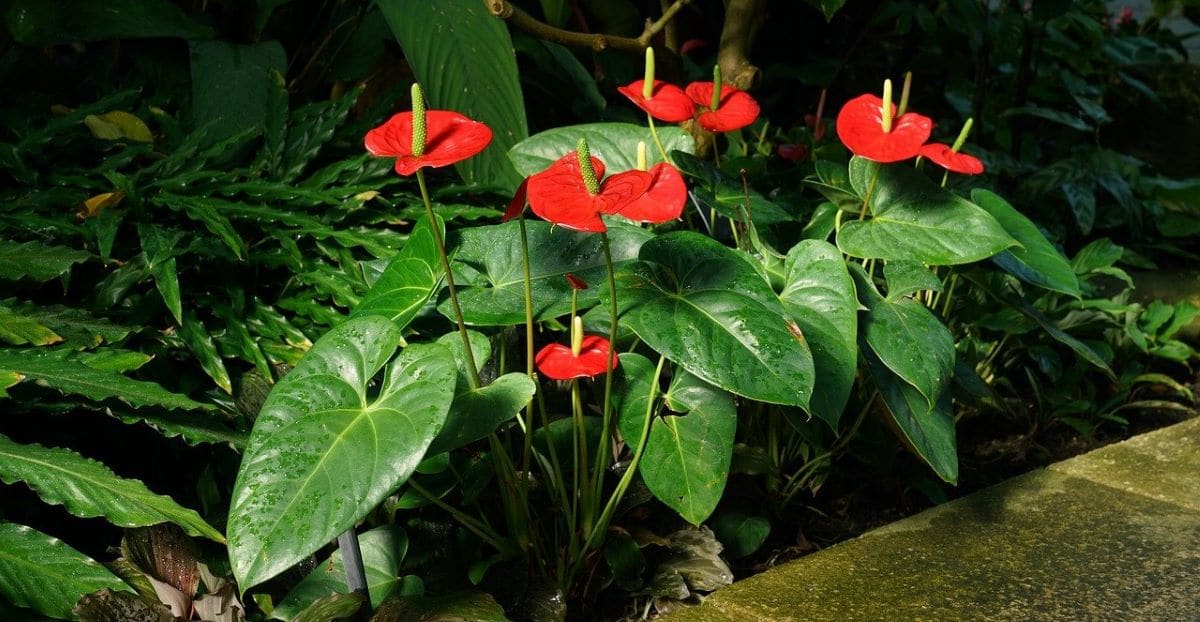
- Garden: they require soils rich in organic matter, and well drained.
- Flower pot: it is advisable to use specific substrates for acidic plants, with a pH between 4 and 6 (for sale here). Another option is to plant them in coconut fiber, which is also acidic and also allows the roots to grow normally.
Subscriber
It is necessary to pay them in spring-summer with manures or fertilizers, such as one for flowering plants, guano (for sale here), or even one for acidic plants will come in handy (for sale here), since they are plants that do not like too much water or soil rich in calcium. In fact, it is for this reason that they cannot be planted in alkaline soils or in pots with substrates whose pH is higher than 6, since doing so their leaves would become chlorotic and the plants would spoil.
But beware: follow the directions on the package. You do not have to add more or less amount than indicated in it.
Transplant
Anthuriums are slow-growing plants, so you won't have to transplant them often. If you want to change the pot, do it only when they grow roots from the drainage holes, or when they have been in it for about 4 years.. The right time is spring.
In that season too, and if the weather allows it, you can plant them in the garden.
Multiplication
It multiplies by seeds or by division in spring, but it is complicated. A warm environment is required, substrate such as coconut fiber (for sale here) or vermiculite (for sale here) that have perfect drainage, and plastic pots with holes.
In addition, it is also advisable to treat seeds and newly divided plants with multipurpose fungicides (for No products found.), since otherwise they would become infected with fungi.
Rusticity
Anthurium is a genus of tropical plants that live in rainforests. In these places the temperatures remain more or less stable, between 15 and 30ºC maximum. Thus, they are not prepared to endure the cold.
Anthurium problems
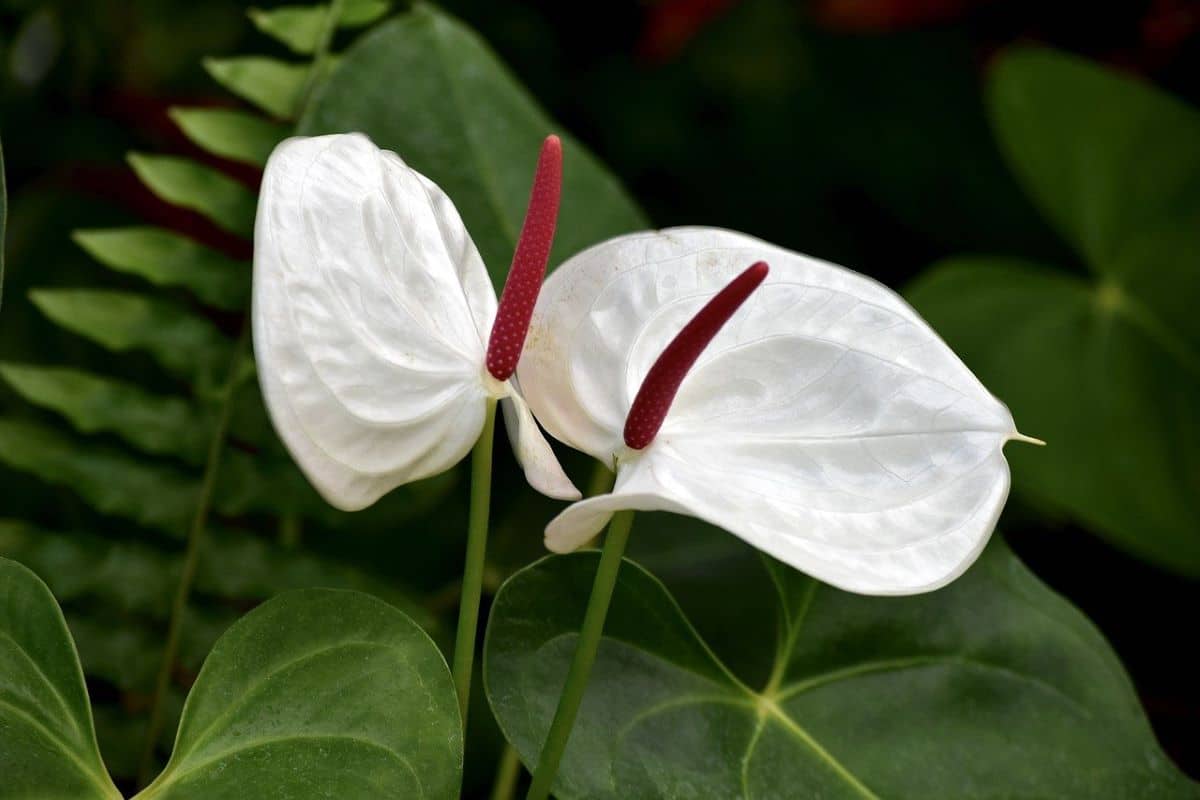
Although we sometimes do our best to provide you with the best care, we cannot always prevent some problems from arising. Therefore, below we will explain what you may have and how to treat them:
Pests
The pests that can affect you are:
- Red spider: it is a reddish mite that weaves cobwebs between the leaves, and also feeds on their sap. It must be removed with an acaricide (such as this). More information.
- Mealybugs: they are sap-sucking parasites. They can look like cotton, in which case they would be cottony or ribbed mealybugs, or limpet-like. In this case it would be the San José lice. But regardless of the variety, they are removed manually with soap and water, or if you prefer with an anti-mealybug insecticide (on sale here) or diatomaceous earth (for sale here). More information.
- White fly: it is a very small fly, about 0,5cm, which also survives by feeding on the sap of the plant, in this case the anthurium. Therefore, it must be fought with specific insecticides (for sale here). Learn more.
- Aphids: they are very small, about 0,5 centimeters long, and green, brown, or yellow depending on the variety. They also feed on sap, and are found in both leaves and flowers. It can be removed with soap and water, or with an anti-aphid insecticide (on sale here). More information.
Management
It is important to control the risks, since otherwise you could end up getting sick from:
- Anthracnose: caused by a fungus, it causes very small yellowish spots to appear on the leaves, which over time coalesce into larger and larger spots. The best thing is to prevent: avoid spraying the leaves during the cold season, and do preventive treatments with fungicide that takes copper all year (on sale here), following the instructions on the package. In case of symptoms, they will be treated with fungicides and risks will be reduced. Learn more.
- Mottled: are different fungi that cause the appearance of spots, usually rounded, brown or black. They are treated with fungicides (such as this).
Why does the anthurium not grow?
You may need more space. Perhaps it has been in the same pot for many years, and it has simply outgrown. Check for roots growing out of the drainage holes; If not and you still think it should be transplanted, try to extract it from the pot with one hand while holding the container. Pull it upwards, gently, and if you see that it comes out with the root ball (earth bread) without falling apart, it is because it requires a larger one.
Other problems
- Does not bloom: maybe not the time. Anthurium blooms in summer; If you don't do it at that time, you may be running low on compost. One for flowering plants can help (get it here).
- Flowers dry fast: If this happens, it is likely that you will need to water more often. Check the moisture of the soil and see if it is dry, in which case water.
- Brown or white spots: this is due to the presence of fungi. Reduce the risks and treat the plant with fungicides. More information in the Diseases section.
- Yellow leaves in winter: it is due to low temperatures. Protect your plant from the cold by taking it indoors.
- Withered leaves: it is usually due to air currents. It is important that you stay away from the air conditioner, fans, etc. so that the leaves stay green.
Where to buy?
If you want, you can get it here:
